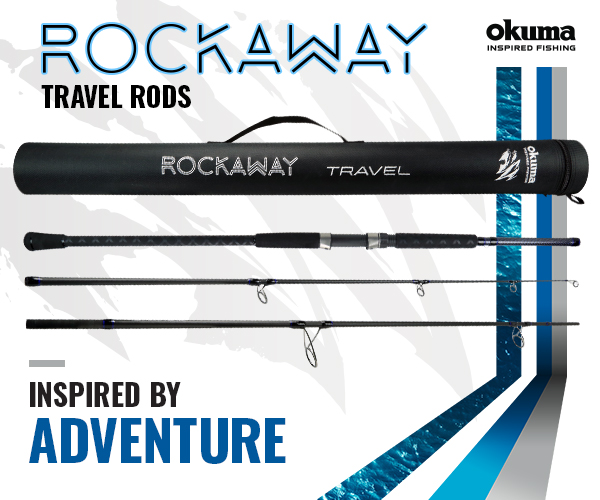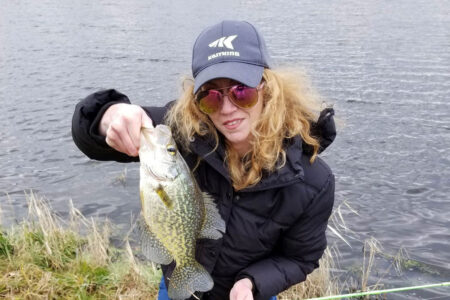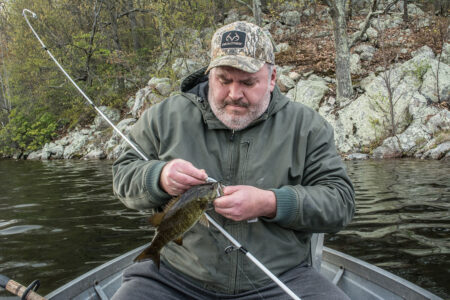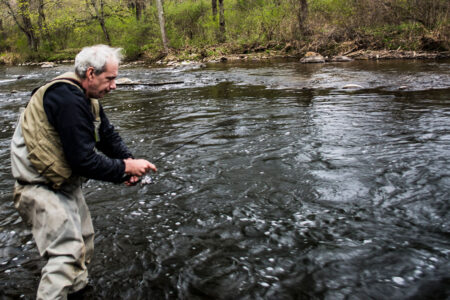Methods to target late-season walleye with diagonal and vertical jigging techniques.
By mid-October, water temperatures may dip under the 60-degree mark. Lakes and reservoirs that suffer oxygen depletion during summer are not completely turned over, but oxygen has got down 25 feet or so. Anglers who like to jig walleyes, rather than offer them live herring, are catching some at the bottom from points and drop-offs. By November, turnover should be complete with water temps in the mid-50’s. Hardcore jiggers will continue to take walleye until hard water no longer allows boating.
Traditionally, vertical jigging is how it’s done. Gotcha jiggers and Rapala ice jigs fished straight down do the damage. Both varieties of jigs resemble plugs because they have lengthy bodies. Tie loops are on top, which make jigging them vertically effective. The Gotcha has a tie loop on top of a leadhead; a plastic tube for a body trails behind. Quick snaps of the rod make the lure dart in a swimming motion. They’re popular for Spanish mackerel from ocean piers down south. Rapala Ice Jigs have tie loops in the middle, and they are preferred for subtler jigging motions: a simple up and down rhythm.
A calm lake makes vertical jigging easy while an electric motor allows you to cover range along a drop-off. A slight breeze may be in your favor, too, but because of drag on the line, you will have to occasionally reel up and let the jig drop back straight down. Heavy wind cuts opportunity, because although you can anchor and jig, you would be stuck in one place. The best option is to control the boat with a bow-mounted electric motor. A handle-grip stern mount electric works fine on a calm lake or under a slight breeze but is ineffective when wind is heavy.
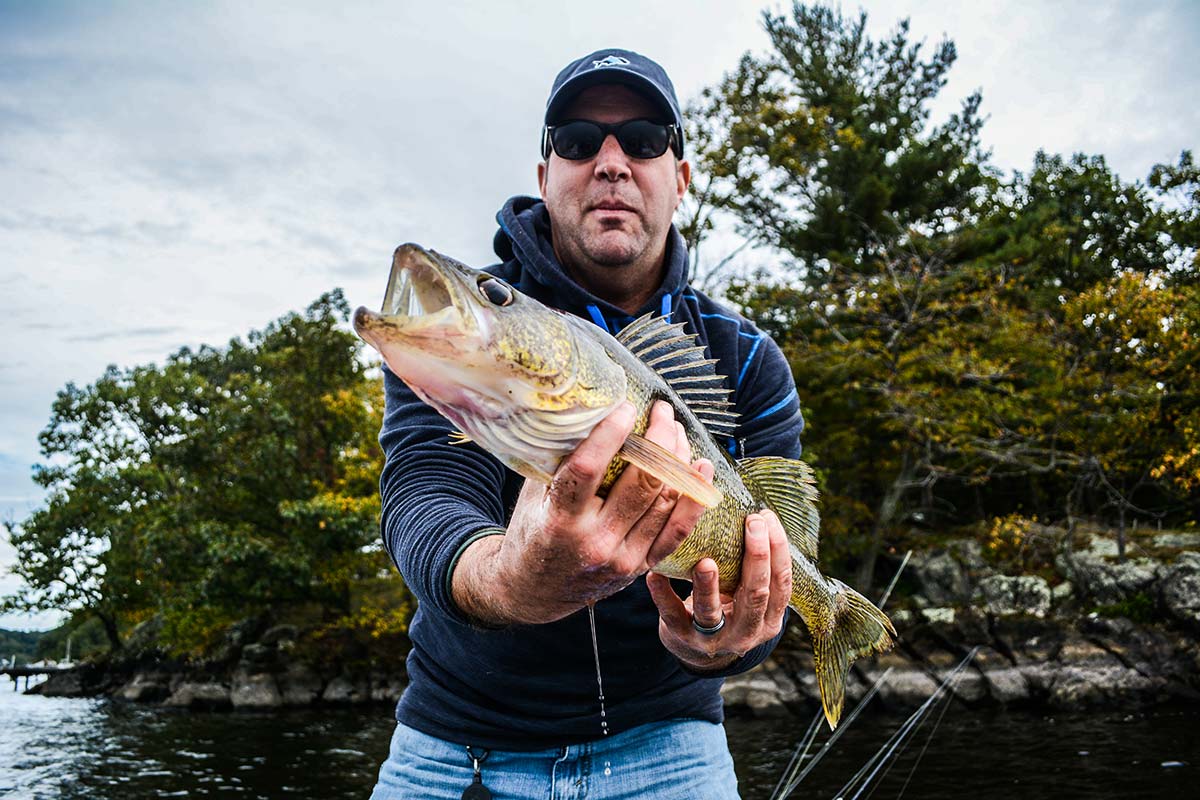
It is also possible to cast and retrieve either of these jigs. You can allow a Rapala Ice Jig to sink to bottom, anywhere from 15 to 50 feet deep, and then snap your rod high, which causes the jig to swim in a violent arc. Let it drop and repeat. Gotchas have similar action. Naturally, it’s not a good idea to jig this way when the water really gets cold, because walleye slow down.
They continue to feed, however, and another way to get them to bite is by another sort of diagonal approach. First, let me explain that notion. When you cast a jig and let it sink, usually 30 to 45 feet deep, the angular relationship of the line to the horizontal surface and the vertical distance immediately beneath you to the bottom is diagonal. I prefer to use bladebaits when I jig diagonally, and they remain effective as the water gets colder. It doesn’t take much working of the rod tip to impart vibrating action. That way, you’re not working the lure too fast. You can work a bladebait by lifting it inches off the bottom and letting it fall back, but whether the motion you impart is slight or more pronounced, always pay attention as the lure drops back. That’s often when a walleye hits, and they don’t always hit hard.
The Binsky is my favorite. I’ve tried the Cicada and the action felt lumpy, not a clean blade vibration. Heddon also makes a bladebait, the Sonic. There are others. Work any you choose with braid line. You will not get any of the feel you will need from monofilament or fluorocarbon. I haven’t tried other types of line, but in any case, use a line that doesn’t stretch. You need direct feel. 15-pound test Power Pro works fine, but if you want to use 6-pound test, you might get even better feel. A 10-pound walleye is possible, so line test any less is pushing the edge.
Among many rods I own, I choose my medium power, 5-1/2-foot, St. Croix spinning rod. The short distance from wrist to tip gives me firm control. Medium power does, too. Light power is spongy; you won’t feel enough vibration. It wouldn’t seem important to feel that vibration, but it not only keeps you awake; it signifies the ability to also feel a subtle hit.
Whether you drop a jig straight down or cast, fishing drop-offs in October, November, even December is a fascinating exercise in concentration. To feel a tap and hook a walleye is a thrill you will never forget.
